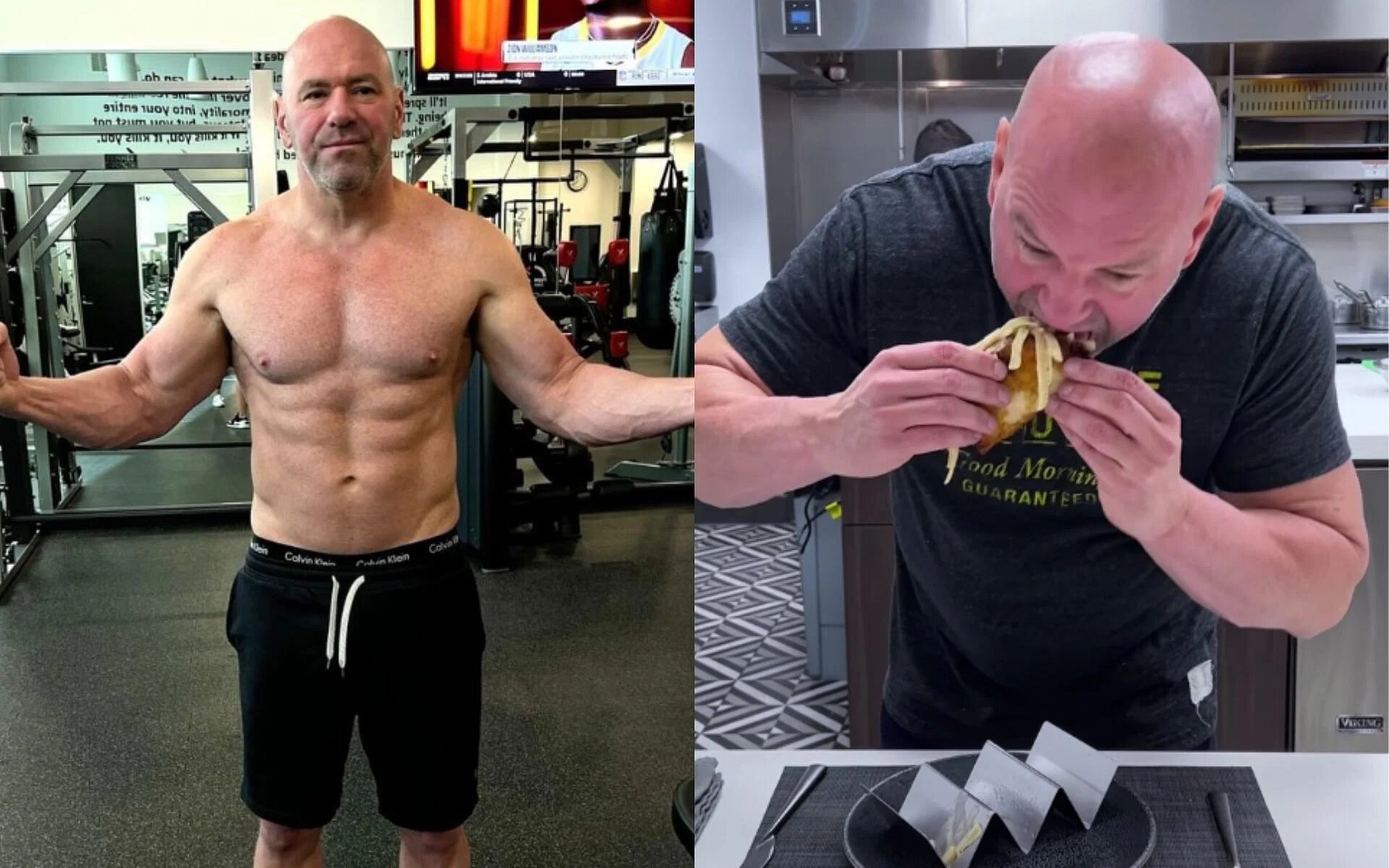If you’re interested in living longer, you might know about Gary Brecka. He’s known for helping people stay healthy by focusing on their bodies. The Gary Brecka diet is about eating fewer carbs and sugars that aren’t good for you. He suggests having 30 grams of protein and doing light exercise for 30 minutes after waking up. Gary Brecka isn’t just anyone giving advice; he’s a co-founder of the 10X Health System and has degrees in biology. He’s worked with famous people like Dana White, the head of the Ultimate Fighting Championship. If you follow Gary Brecka online, you’ll learn about his diet tips, like eating protein soon after waking up. But is it safe and worth following? This article will explore that question and give you all the information you need about Gary Brecka Diet.
Understanding the Gary Brecka diet
A popular health and fitness expert, entrepreneur and founder of many wellness companies “Gary Brecka” who is known for his unique and simple approach on health optimization, by focusing on biohacking and longevity. While Gary Brecka does not adhere to a specific, rigid “diet” per se, his recommendations often emphasize principles based on nutrition, supplementation, and lifestyle choices aimed at enhancing overall well-being and longevity.
- Gary brecka diet include incorporating high-quality protein sources into the meal like beef, fresh fish, and other sources of protein as protein play as very important role when it comes to muscle repair, fat loss, and maintaining a healthy metabolism.
- Gary Brecka diet also include intermitted fasting, He often recommends fasting windows such as 16:8 (fasting for 16 hours and eating during an 8-hour window). This method is thought to improve fat burning, promote cellular repair, and aid in digestion.
- Gary brecka diet includes Anti-Inflammatory Foods, as these foods help in reducing the risk of chronic inflammation. These foods include healthy fats like omega-3-rich sources (e.g., wild-caught fish), nuts, and seeds, as well as colorful vegetables that are rich in antioxidants.
- Gary brecka diet also include Low-Carb and Keto, as they are very helpful if you are looking for weight loss and to boost energy. This can help you to focus on nutrient-dense vegetables, healthy fats, and moderate protein intake by limiting refined carbs.
- In addition to food recommendations, brecka diet also include Supplements for Longevity, He may suggest taking vitamins, minerals, or other supplements to improve immune function, detoxification, and overall vitality.
- Hydration play an important role in many diet plans, Gary brecka also suggest to consume water and to stay hydrated in his diet.
Gary Brecka Diet Macronutrient Ratios
Here’s what you need to know about the Brecka Diet
Gary Brecka’s diet plan aims to control blood sugar and insulin levels. To do this, he suggests eating primarily fat, a little bit of carbs, and some protein.
• 75% of your calories should come from fat
• 5-10% from carbs
• 10-20% from protein
There’s research supporting this idea. For example, a study in the American Journal of Clinical Nutrition showed that having a high-protein breakfast helped teenage girls in many ways, like with their hormones and overall diet. Eating a protein-rich breakfast was even better than skipping breakfast as part of a fasting routine.
These findings suggest that eating breakfast, especially one with lots of protein, could be an excellent way to feel full, eat less, and have a healthier diet, especially for overweight or obese teenage girls.
Also Read: Exploring Joe Rogan Carnivore Diet: Tips, Benefits, and Long-Term Effects
Gary Brecka’s 30-30-30 Method
After a success of Gary brecka diet, he also introduce a wellness approach created to optimize health, energy, and longevity known as “Gary Brecka’s 30-30-30 Method ” This method involve 3 major elements: a 30 minutes exercise, a 30 minutes exposure of sunlight and a 30 minutes mindful exercise. These practices are intended to align the body with natural rhythms, support metabolic processes, and enhance mental clarity.
Here is the detailed of all the 3 component of Gary Brecka’s 30-30-30 Method:
1. 30 Minutes of Exercise
The first part of gary brecka 30-30-30 method is a 30 minutes engaging physical activity( exercise) every day. Exercise plays an important role in our overall heath, physical health, boosting metabolism by helps in digestion and provide more mental clarity, exercise keeps you active and energetic. Brecka recommends activities that involve both aerobic and resistance training, with a strong emphasis on functional fitness. The 30 minutes could include activities like:
- Running of treadmill or jogging in a park.
- Do weight lifting exercises
- Do yoga in morning or pilates
- Do Swimming and cycling to stay active
Regular exercise also plays a key role in reducing inflammation, improving heart health, and balancing hormones, which aligns with his focus on optimizing bodily functions.
2. 30 Minutes of Natural Light Exposure
The second part of Gary brecka 30-30-30 method includes a 30 minutes of exposure to sunlight. According to brecka taking exposure to natural light in the morning helps to regulate body’s circadian rhythms, sunlight also helps in increasing serotonin levels, the hormone responsible for boosting mood and energy levels. Exposure to natural light also:
- Supports Vitamin D Production.
- Helps in improving sleep quality and reduce fatigue.
- Helps in production of melatonin for better sleeping pattern
3. 30 Minutes of Mindfulness or Relaxation
The third part of the method is the mental and emotional component: 30 minutes of mindfulness, relaxation, or stress management. In today’s fast-paced world, mental clarity and emotional health are just as important as physical well-being. This component involves taking time to practice stress-relief activities such as:
- Meditation or deep breathing exercises
- Journaling or reflecting
- Stretching or light yoga for relaxation
- Gratitude practices
Benefits of the 30-30-30 Method
Gary Brecka’s 30-30-30 Method is designed to provide a holistic approach to health that promotes balance in all areas of life. following are some benefit of this method are as follow.
- It Improved Physical Fitness
- Enhanced Mood and Energy
- Helps to get better sleep
- Reduced Stress and Anxiety
- Optimized Longevity
Gary Brecka’s 5 Foods to Avoid
- 1. Processed Sugars and Refined Carbohydrates
- 2. Seed Oils (Vegetable Oils)
- 3. Highly Processed Meats
- 4. Artificial Sweeteners
- 5. Trans Fats (Partially Hydrogenated Oils)
Gary Brecka Diet Food List
Here’s a chart listing the Gary Brecka Diet Food List, highlighting the foods he recommends incorporating into your diet for optimal health and wellness:



Red flags: Gary Brecka diet
Like Lean Mass Hyper Responders, I’m worried about the long-term health effects of the Brecka diet, especially on heart health. Some online sources promoting this diet overlook how a high-fat diet can affect people’s cholesterol levels. Following the Brecka diet often leads to increased LDL cholesterol levels for most people, and it’s important not to ignore the link between LDL and heart disease.
There needs to be more clarity surrounding saturated fat and cholesterol in the field of nutrition. Our bodies produce 80% of the cholesterol we need and regulate its levels. This debunked the old belief that consuming eggs raised cholesterol levels in most individuals.
However, the impact of saturated fat is different. For many, consuming a diet rich in saturated fat raises LDL cholesterol levels significantly, sometimes to hazardous levels, and individual responses vary. If you experience a substantial increase in LDL when consuming saturated fat, the Brecka diet may not be suitable for you.
Promoting a ketogenic diet as a universal solution, regardless of individual biomarkers, is not advisable. While Gary acknowledges that people metabolize folic acid differently due to common gene variations, he overlooks variations in fat metabolism. He advocates for personalized supplement plans but needs to emphasize personalized dietary approaches, which raises concerns.
For instance, some individuals with the ApoE4 gene experience heightened responses to high-saturated fat diets. Unlike Dr. Gundry’s protocols, the Brecka diet lacks warnings for ApoE4 carriers.
Main Concerns regarding the Brecka diet
- Some individuals with genetic variations in the PPARA genes struggle to achieve ketosis. For them, following Gary Brecka’s diet could be particularly detrimental. High-fat diets without protective ketones pose significant health risks.
- Many people experience substantial increases in LDL cholesterol levels when following high-fat, ketogenic diets, elevating the risk of heart disease over time.
- The Brecka diet advocates for consuming full-fat dairy, yet over two-thirds of the global population are lactose intolerant. This figure is even higher among Asian and African populations.
- If the Brecka diet impacts APOB levels, it could elevate the risk of dementia, especially among ApoE4 carriers.
Modifying the Brecka diet
The core principle of the Brecka diet is to stabilize insulin levels to prevent blood sugar fluctuations throughout the day. This is sensible given the excessive consumption of sugar and simple carbohydrates by many Americans, leading to insulin resistance and type 2 diabetes.
While it’s acknowledged that foods like pizza and crackers aren’t optimal choices, transitioning everyone to a ketogenic diet isn’t the solution. Following the Brecka diet’s recommendation of obtaining 75% of calories from fat poses challenges and can elevate LDL cholesterol levels in many individuals.
Instead of pursuing an extremely low-carb approach, it’s plausible to modify the Brecka diet by incorporating “slow carbohydrate” sources with minimal impact on blood sugar levels. The PREDICT-1 study underscores the role of genetics and gut microbiota in determining post-meal blood sugar responses.
Introducing slow-carb options such as black beans, lentils, quinoa, and sweet potatoes as replacements for some of the fats in the Brecka diet could offer a healthier alternative for numerous individuals.
Rather than strictly reducing carbohydrate intake, a shift towards low-glycemic foods warrants consideration.
Diet plans like California Coastal and Forager prioritize lower intake of simple carbohydrates, aligning with individuals who may be predisposed to blood sugar issues. However, ketogenic diets aren’t advocated. Instead, the focus is on consuming low-glycemic foods rich in slow carbs, lean proteins, ample fiber, and omega-3 fatty acids, alongside lifestyle modifications to support metabolic health.
This approach is substantiated by research, including a study published in BMC Nutrition, demonstrating the superiority of a personalized nutrition protocol over a ketogenic diet for sustained weight loss and improvements in biomarkers over 18 months. The study concluded:
While the ketogenic group experienced more significant weight loss during the 24-week intervention, the personalized nutrition group (low glycemic index/nutrigenetics) achieved significantly more weight loss. It exhibited notable enhancements in cholesterol and blood glucose levels at the 18-month follow-up. This underscores the potential of personalized nutrition in fostering long-term weight management and positive changes in cardiometabolic parameters.
Last Words
Gary Brecka Diet offers valuable insights into health and wellness. Yet, it’s crucial to acknowledge individual uniqueness, as a one-size-fits-all dietary approach may exclude many individuals from benefiting.
Also Read: Why Carnivore Diet is Bad: Health Risks and Long-Term Concerns


